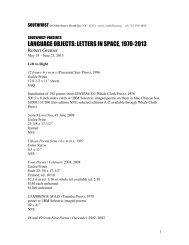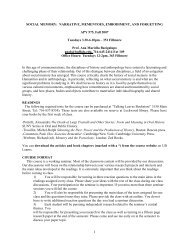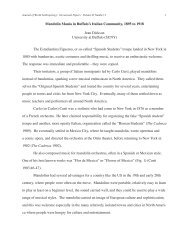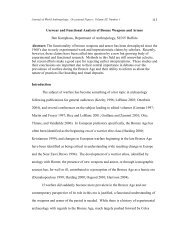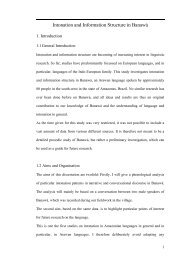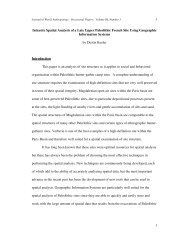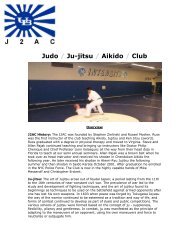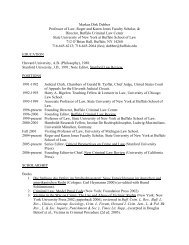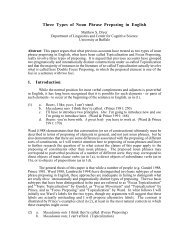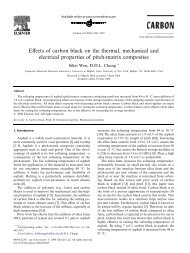Electrophysiological Evidence for Sentence Comprehension - Wings
Electrophysiological Evidence for Sentence Comprehension - Wings
Electrophysiological Evidence for Sentence Comprehension - Wings
You also want an ePaper? Increase the reach of your titles
YUMPU automatically turns print PDFs into web optimized ePapers that Google loves.
the changes in language related components (or auditory perception related components)<br />
in the population of children with SLI (e.g. Ors et al. 2002, McArthur & Bishop, 2005).<br />
The results of these research falls into two groups regarding the possible explanation of<br />
SLI; while research oriented towards infants (age 5 months) at-risk revealed differences<br />
in the mismatch negativity (MMN), in experiments per<strong>for</strong>med by McArthur and Bishop<br />
on SLI children (age around 13) a difference in N1-P2-N2 components were found. As<br />
the MMN can be related to memory trace processes (Näätänen et al., 2005), this could<br />
lead to memory-based explanation of SLI. McArthur and Bishop’s findings speak in<br />
favor of the deficit in rapid auditory stimuli processing as well as the findings in the Ors<br />
et al. (2002) in which a delay in P300 latency <strong>for</strong> auditory stimuli in parents of SLI<br />
children was found. However, these findings are not conclusive: they are all restricted<br />
either to non-language stimuli (tones of different frequencies or spectrum) or very simple<br />
language stimuli suitable <strong>for</strong> the oddball paradigm (syllables, <strong>for</strong> example). A paradigm<br />
with sentences was used in an experiment by Heather van der Lely (van der Lely &<br />
Fonteneau, 2003). She claimed that instead of syntax related LAN and P600, SLI children<br />
showed difference in N400. This would amount to some sort of asyntactic comprehension<br />
that would be a characteristic of her controversial G-SLI group. In a study by Kaan et al.<br />
(2000) a well known difficulty with filler-gap constructions was examined and a<br />
significantly latter onset of the P600 was found in children with developmental language<br />
impairment.<br />
54




